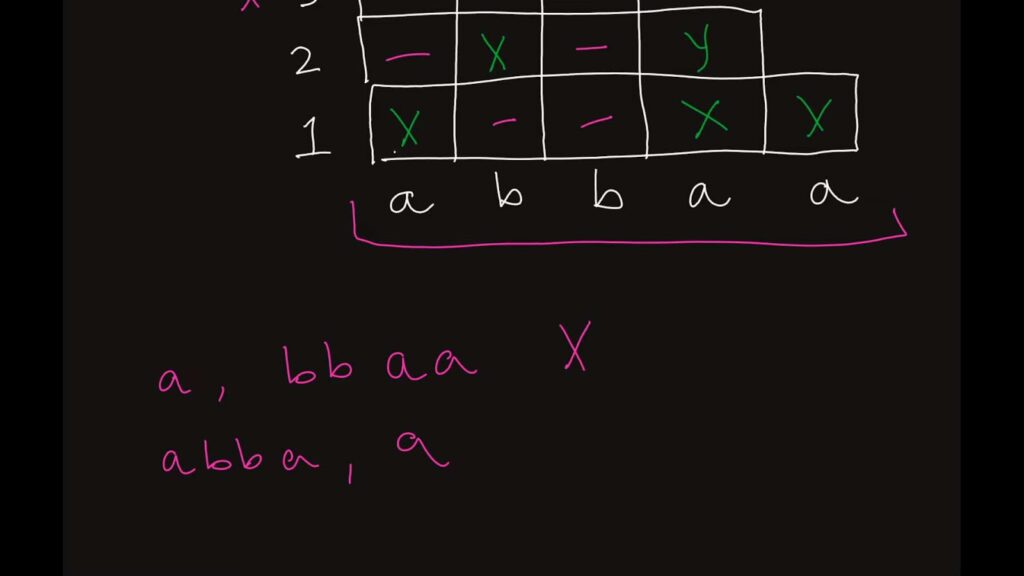In the vast domain of computational linguistics and computer science, the process of parsing — converting a sequence of symbols into a structured representation — stands as a cornerstone. Essential for understanding and processing languages, efficient parsing techniques pave the way for innovations in areas like compilers, natural language processing, and even artificial intelligence. One such powerful technique is the Cocke-Younger-Kasami (CYK) algorithm, a probabilistic parsing method for context-free grammars. This article delves into the intricate workings of the CYK parser, its representation through parsing tables, and a comprehensive code analysis to understand its implementation.
The Cocke-Younger-Kasami (CYK) Algorithm: A Detailed Insight
The Cocke-Younger-Kasami (CYK) algorithm is a prominent technique within the realm of dynamic programming, particularly designed for generalized parsing tasks. Generalized parsing refers to the challenge of decoding ambiguous grammars where multiple interpretations or parses might exist for a given input.
Key Highlights:
- Dynamic Programming Technique: Dynamic programming is an optimization approach that solves complex problems by breaking them into simpler sub-problems. The CYK algorithm leverages this by populating a table with potential parses for increasing segments of the input;
- Table Population and Parsing Success: As the table gets populated, if upon its completion, the grammar’s initiating symbol is located in the table’s top cell, it indicates a successful parse.
Implementation in C++:
When discussing its application, the CYK algorithm can be efficiently implemented using C++. A class named MB::cyk_parser is generally employed for this purpose. This class is typically initialized using a specific grammar (for more on this, readers can explore ‘Context-free grammar in C++’). One of its notable methods is parse(), which aims to identify a sentence. If this method is invoked alongside a std::ostream, the parsing table is exhibited.
Essential Grammar Conditions:
For the CYK algorithm to function effectively, the employed grammar has to adhere to the Chomsky Normal Form (CNF).
Features of Chomsky Normal Form (CNF):
Every rule’s left-hand side consists of only a single non-terminal symbol.
The right-hand side of each rule can either be:
- A solitary terminal symbol;
- A combination of two non-terminal symbols.
Recommendation: Always ensure the grammar is in CNF before utilizing the traditional CYK algorithm. However, it’s worth noting that several modern variations of the CYK algorithm can process grammars even if they aren’t in CNF.
Tips for Effective CYK Implementation:
- Grammar Verification: Before applying the CYK algorithm, validate whether the given grammar aligns with the CNF requirements;
- Optimized Table Population: To enhance efficiency, consider strategies that allow for swift table population without excessive memory usage;
- Algorithm Variations: Stay updated on the newest variations of the CYK algorithm, especially if dealing with non-CNF grammars.
Overview of the Parsing Table and Its Structure
In computer science, a parsing table is an essential tool when dealing with grammars. Specifically, the parsing table discussed here follows a unique layout. Internally, it’s constructed as an upper-right triangular matrix. However, for user-friendliness and ease of interpretation, it’s presented as a lower-left triangular matrix when printed. This representation style is preferred as it offers a more intuitive reading experience for most users.
Detailed Dive into the CYK Algorithm Implementation
- File Structure: The provided code gives an implementation of the Cocke-Younger-Kasami (CYK) algorithm. The central component is defined in the header file CYK.hpp;
- Namespaces and Classes: The implementation is encapsulated within the namespace MB. Inside it, there’s a class named cyk_parser;
- Class Members: This class contains public member functions to parse a given sequence of symbols and a private member variable for storing the grammar rules. The parsing is done based on a template, allowing for flexibility in the type of input iterators provided;
- Internal Working: The parsing table is populated in a two-step approach;
- Diagonal Population: First, the main diagonal of the table is populated with symbols based on the grammar rules;
- Upper-Right Triangle Population: The cells of the upper-right triangle of the table are then filled. This is achieved by calculating the cartesian product of specific sets and then fetching relevant grammar rules;
- Printing the Parsing Table: If an output stream is provided, the table is printed as a lower-left triangular matrix. This makes reading the results easier and intuitive;
- Evaluation: The parsing is considered successful if the starting symbol of the grammar is present in the top-right cell of the table.
A Brief Look at the Example Program
- Program Structure: The example program showcases how to use the CYK parser;
- File and Grammar Input: Initially, it reads a grammar from a file named cyk.dat. This grammar provides the necessary rules for parsing.

- Sentence Parsing: A sample sentence, represented as an array of strings, is then parsed using the CYK parser. The result, whether the sentence adheres to the grammar or not, is printed to the console;
- Error Handling: If there’s an issue opening the grammar file, an error message is displayed;
- Sample Grammar and Output: The given grammar comprises various rules where symbols like S, A, B, and C are transformed. When parsed with the sample sentence, the output displays the populated parsing table. A notable aspect is the presence of the start symbol S in the top-left cell, signaling a successful process.
Conclusion
Parsing tables and the CYK algorithm are essential concepts in formal languages and parsing theory. The provided code offers a comprehensive implementation of the CYK parser, which allows users to determine if a given sentence conforms to a specific grammar. Proper understanding and interpretation of the output, especially the table, is crucial for meaningful insights.